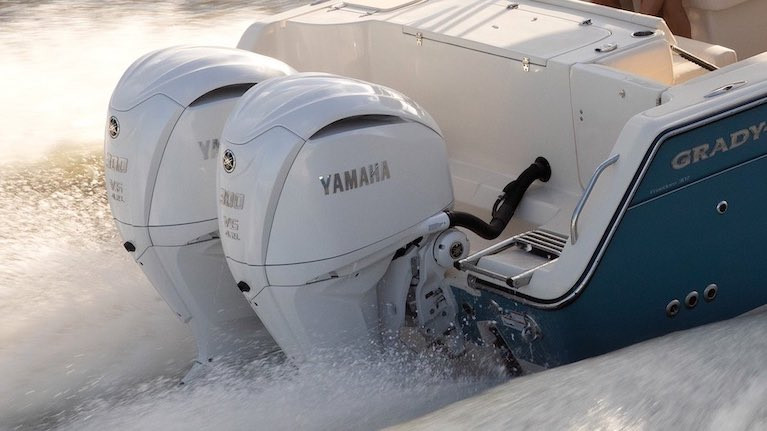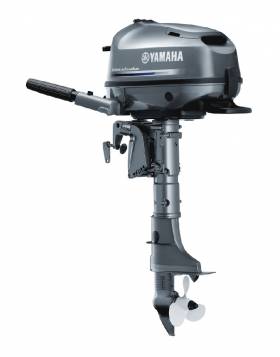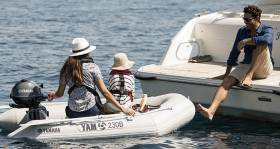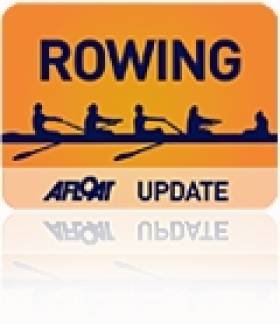Displaying items by tag: Yamaha
Yamaha V6 Outboard Range Upgraded
Yamaha Marine has announced a series of innovative upgrades to its premium V6 outboard range.
The improved Yamaha V6 range shares design cues from the company’s flagship XTO, with new features including Digital Electric Steering (DES), Thrust Enhancing Reverse Exhaust (TERE) and Yamaha’s exclusive TotalTilt™.
Yamaha’s Premium V6 segment now offers extensive functionality, from everyday use and long-distance journeys to high octane sports use.
New 250 – 300 hp V6 Engines
Digital Electric Steering (DES) is now built-in to the 300 - 250hp V6 engines equipped with Steer by Wire (SBW), delivering a smoother and more intuitive driving experience, with no hydraulic systems to bleed or steering cables to snag. Non-SBW 300 - 250hp V6 engines are fully compatible with optional bolt-on DES or traditional hydraulic steering systems.
Yamaha’s exclusive TotalTilt™ function allows complete tilt up or down (until trim ram contact) from any position with a simple double-push of a button, with a buzzer sounding to alert others to keep clear of the outboard and an integrated tilt limiter to prevent inadvertent damage.
Augmenting the outboards reverse thrust and control, the Thrust Enhancing Reverse Exhaust (TERE) keeps exhaust bubbles above the anti-ventilation plate and out of the propeller below 2500 rpm, ensuring the prop only bites bubble-free water. Combining TERE with optional DES and the Helm Master EX joystick will enhance manoeuvrability around docks and confined spaces.
Taking much of the styling from the XTO, the new 4.2-litre 300 - 250hp V6 engines now feature a colour-matched lower unit, a new one-piece top cowling with water-draining air duct moulding, a new bottom cowling, apron shape and premium graphics.
The lower unit has also been improved and features the new design of the gear tooth profile with improved contact and reduced surface pressure. In addition, the durability has been improved by changing the oil flow inside the lower case and the bearings that support the gears.
New 225hp V6 Engines
The new Yamaha 225hp V6, designed with the same styling as the 250 - 300, is also fully compatible with optional DES and includes the TotalTilt™ function and TERE.
The large displacement cylinder block, like the bigger V6s, features a unique long intake manifold, in-bank exhaust, an electronic control module (ECM) controlled fuel injection system and variable camshaft timing (VCT) resulting in improved reliability and fuel efficiency.
New Drive by Wire Side Flush Mount
Yamaha is also introducing its new Drive by Wire (DBW) 6X9 side flush mount control, designed to bring the benefits of the Helm Master EX to a broader array of premium boats.
The DBW side flush mount uses Yamaha’s latest electronic control system bringing smoother, more precise control through the power range. Easy to install, users will enjoy its ergonomic design and premium feel single-function buttons.
The DBW side flush mount is suitable for single-engine configurations from 150hp and above Yamaha outboards.
The new Yamaha V6 range and new DBW Side Flush Mount system are available from 2022 season.
O’Sullivan’s Marine Add Yamaha To Their Top Class Engine Brand Range
For many years O’Sullivan’s Marine have been the ‘go to’ outlet for quality outboard engine brands such as Tohatsu, Suzuki and Honda — and now Yahama outboards have been added to their available stock range, writes Brian O’Sullivan.
Whether you are looking to purchase an individual engine, or as part of a tailored boat package, O’Sullivan’s Marine are now able to offer all top-quality engine brands — ex stock.
Yamaha’s highly popular engines are well known for their reliability, quiet running and excellent fuel economy, and range from lightweight portable 2.5HP right through to the powerful 350HP V8.
O’Sullivan’s Marine are renowned for their expertise in both the supply and servicing of outboard engine, and have the largest choice of outboard engines on permanent display in their Tralee showrooms.
With full-time mechanics and the latest equipment and software, O’Sullivan’s Marine can service everything they supply. Contact them for a quotation — for a new engine to whatever repairs may be required, they are happy to oblige.
Yamaha Unveils New Outboards At Southampton Boat Show
Yamaha has more international brands on display than previously to give visitors a greater choice of powered craft and RIBs for a lifestyle afloat at today's Southampton boat show. From WaveRunner PWCs, trailer-boats, high performance RIBs and day-boats to fishing craft and offshore cruisers, Yamaha has something to suit every pocket and performance wish.
Around the show key models from Anytec, Ballistic RIBs, Chaparral (new model), Cobra RIBs, Draco, Finnmaster, Jeanneau, (with new models), Linder, Ribeye (new PRIME model), Rigiflex, Robalo, Sealegs, Whaly, White Shark and Zodiac are on show, with a range of Yamaha outboards from 2.5 to 300hp.
The new portable Yamaha F2.5B, the “baby” of the outboard range, is shown for the first time in the UK with deliveries to dealerships already under way. The new model has lower emissions than the previous 2.5, better performance and even more features which are outlined in the separate release.
Although the Ballistic 4.3m is the smallest of the Ballistic RIBs it still retains the solid build quality and outstanding handling that all Ballistic RIBs are known for. Ballistic RIBs are used by military and law enforcement agencies across the world, including the Metropolitan Police in London, the South African police, the Norwegian police and the Fisheries Protection Service in Sierra Leone. Versions of Ballistic RIBs are also widely used by coastguards, harbour masters and dive clubs.
Rowers Sleep at National Rowing Centre as Thieves Strike
#ROWING: Outboard motors worth up to €20,000 were stolen from the National Rowing Centre in Cork at the weekend. It is understood that rowers from the High Performance Programme were staying at the NRC when thieves took the engines, which were attached to catamarans and tinnies moored on the water. The raid did not come from the land.
Rowing Ireland has advised that anyone who becomes aware of 15HP Hondas and 20HP Yamahas being offered for sale should contact the Gardaí.



























































